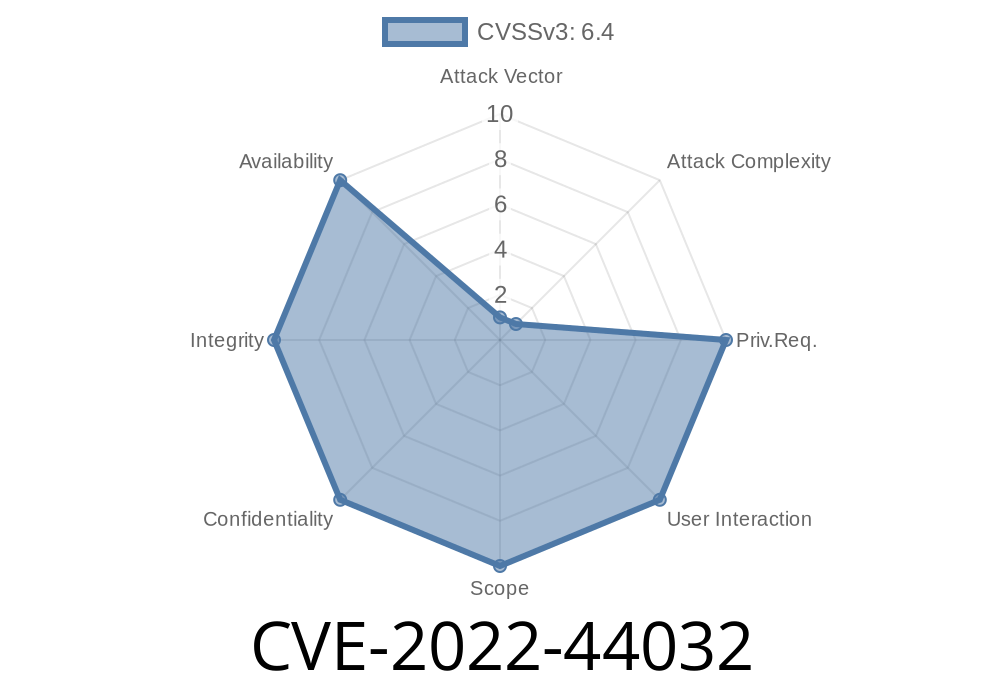Recently, a vulnerability (CVE-2022-44032) has been discovered in the Linux kernel versions up to 6..6, specifically in its PCMCIA cm400_cs driver, which is found under "drivers/char/pcmcia/cm400_cs.c". This vulnerability is caused by a race condition and resultant use-after-free issue that occurs when a physically proximate attacker removes a PCMCIA device while calling the open() function. This post aims to explain the exploit details, demonstrate a code snippet of the problem, and provide links to original references to help understand and handle this vulnerability better.
Exploit Details
The problem lies in a race condition that occurs between the cmm_open() and cm400_detach() functions of the Linux kernel's cm400_cs driver. A race condition is a situation where the behavior of a program depends on the relative timing of events, such as the order in which threads are scheduled to run. In the case of the cm400_cs driver, the race condition can lead to a use-after-free vulnerability, which happens when a program continues to use a pointer after the memory it points to has been freed. This could potentially allow an attacker with physical access to the device to cause a denial of service or execute arbitrary code.
Let's look at a simplified code snippet from the cm400_cs.c file that demonstrates the issue
/* drivers/char/pcmcia/cm400_cs.c */
/*
* This function is responsible for handling the opening of the device
*/
static int cmm_open(struct inode *inode, struct file *file)
{
/* ... */
if (!mutex_trylock(&dev->open_lock)) {
/* ... */
cm400_release(DEV_NO(dev));
return -EBUSY;
}
/* ... */
}
/*
* This function is responsible for detaching the device
*/
static void cm400_detach(struct pcmcia_device *dev_link)
{
dev_link_t *link = &dev_link->link;
/* ... */
if (link->state & DEV_CONFIG) {
cm400_release(DEV_NO(dev)); // <-- Problematic line
}
/* ... */
}
In the code above, there is a potential that the cm400_release() function is called within both the cmm_open() and cm400_detach() functions. If the race condition occurs, and the cm400_release() function is called in both of these functions, this can lead to memory being freed and then accessed again. This would result in a use-after-free vulnerability.
For more details and the complete source code references, please check the following resources
1. Original NVD CVE-2022-44032 description: https://nvd.nist.gov/vuln/detail/CVE-2022-44032
2. cm400_cs driver source code: https://elixir.bootlin.com/linux/v5./source/drivers/char/pcmcia/cm400_cs.c
3. Linux kernel affected versions: https://www.kernel.org/
Conclusion and Recommendations
CVE-2022-44032 is a critical vulnerability present in the Linux kernel's PCMCIA cm400_cs driver, which has the potential to cause security issues on affected devices. It is recommended to update to a patched kernel version to mitigate the risk.
To stay informed and protected against similar vulnerabilities, always keep your system and software up to date, monitor industry sources for new vulnerabilities being disclosed, and have a vulnerability management process in place to apply patches and updates as needed.
Timeline
Published on: 10/30/2022 01:15:00 UTC
Last modified on: 11/01/2022 14:45:00 UTC
